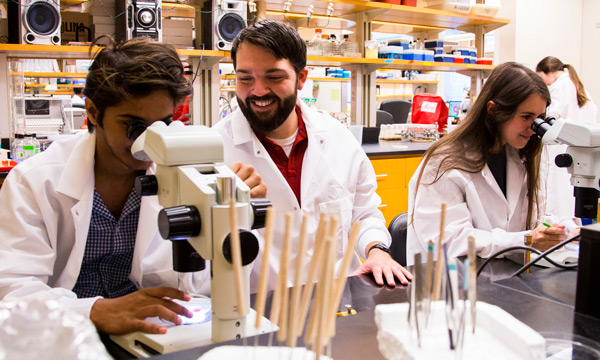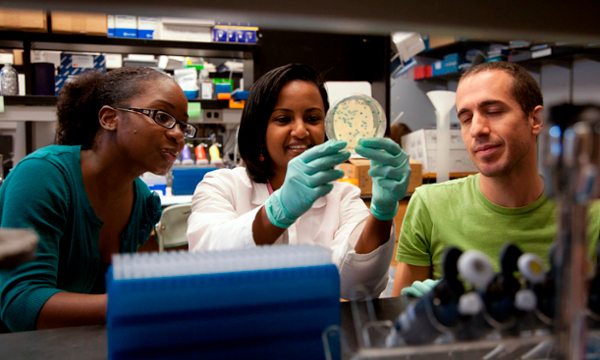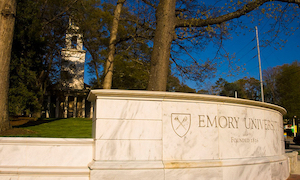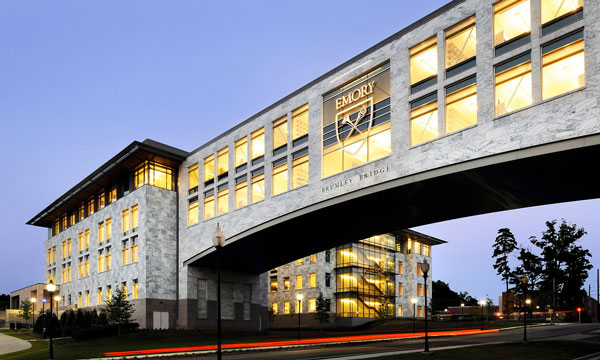Why We Are Unique
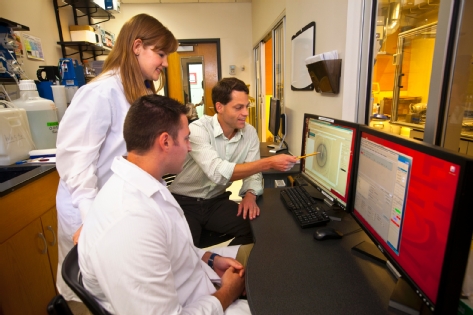
All of our graduate programs are interdepartmental and are centered on broad approaches to modern biological sciences. For an example of just one of the many centers and departments our students and faculty work within, check out this video about the Emory Vaccine Center.
Applicants apply to and are accepted by a specific program that fits their broad interests. Students work with faculty from many different departments, which provides a truly interdisciplinary training experience.
This system offers a well-defined course of study, a smaller cohort of entering students in each program, and a manageable-sized community of faculty who are all invested in the success of the individual student. You will know your professors and they will know you as soon as you arrive.
Most students graduate from the program to which they are admitted, but for those whose research interests change, the GDBBS provides great flexibility by allowing the student to change programs after the first year, or work with another GDBBS faculty member in a different program. This provides the flexibility of an umbrella program, while giving the student the better mentoring of program-based admissions.
There are a number of distinctive advantages to this system:
- Applicants apply to and are accepted by a specific program. This allows the student to directly enter into a program that fits their broad interests and work with faculty from many different departments, which provides a truly interdisciplinary training experience.
- This system offers a well-defined course of study, a smaller cohort of entering students in each program, and a manageable-sized community of faculty who are all invested in the success of the individual student. As a first-year GDBBS student you will receive much more individual interaction with, and attention from, your program faculty than if you began your training in a large and undifferentiated “umbrella program” and only entered a specific program/department after the first year.
- This smaller class size allows for stronger mentoring during the first year, and allows students to form immediate bonds with the faculty and students who will be your peers as you pursue the PhD.
- Most students graduate from the program to which they are admitted, but for those whose research interests change, the GDBBS provides great flexibility by allowing the student to change programs after the first year, or work with another GDBBS faculty member in a different program.
- We feel that this structure provides the student with the best possible mentoring, while also giving them great flexibility in choosing the course of their PhD training.
The Graduate Division of Biological and Biomedical Sciences (GDBBS) offers a unique training structure for their students. All of our graduate programs are interdepartmental and are centered on broad approaches to modern biological sciences.
Current programs are:
In addition to research opportunities within the basic science departments, students also have unique training opportunities unavailable anywhere else. You may choose to work with faculty from:
- Atlanta VA Medical Center
- Emory Center for Aids Research
- Emory Center for Neurological Diseases
- Emory College of Arts and Sciences
- Emory National Primate Research Center
- Emory Vaccine Center
- Georgia Clinical & Translational Science Alliance
- Rollins School of Public Health
- U.S. Centers for Disease Control and Prevention (CDC)
- Winship Cancer Institute
- Woodruff Health Sciences Center

